Bees belong to the Anthophila clade of the Superfamily Apoidea. They are most closely related to wasps and ants. The current decline in bee populations – likely due to pesticides, loss of habitat, and global warming – is an enormous concern as they play an essential role in pollination. There are workshops on bee surveys, identification and other resources available through the Oregon Bee Atlas.
Apine Bees (subfamily Apinae)
Bumble Bees (genus Bombus)
Bumble bees live in small hives with as few as 50 workers. Their numbers have been declining worldwide. Many species have more forms than I show here, so see the Pacific Northwest Bumble Bee Atlas or Bumble Bees of Washington State.
Females are pictured above, males below.
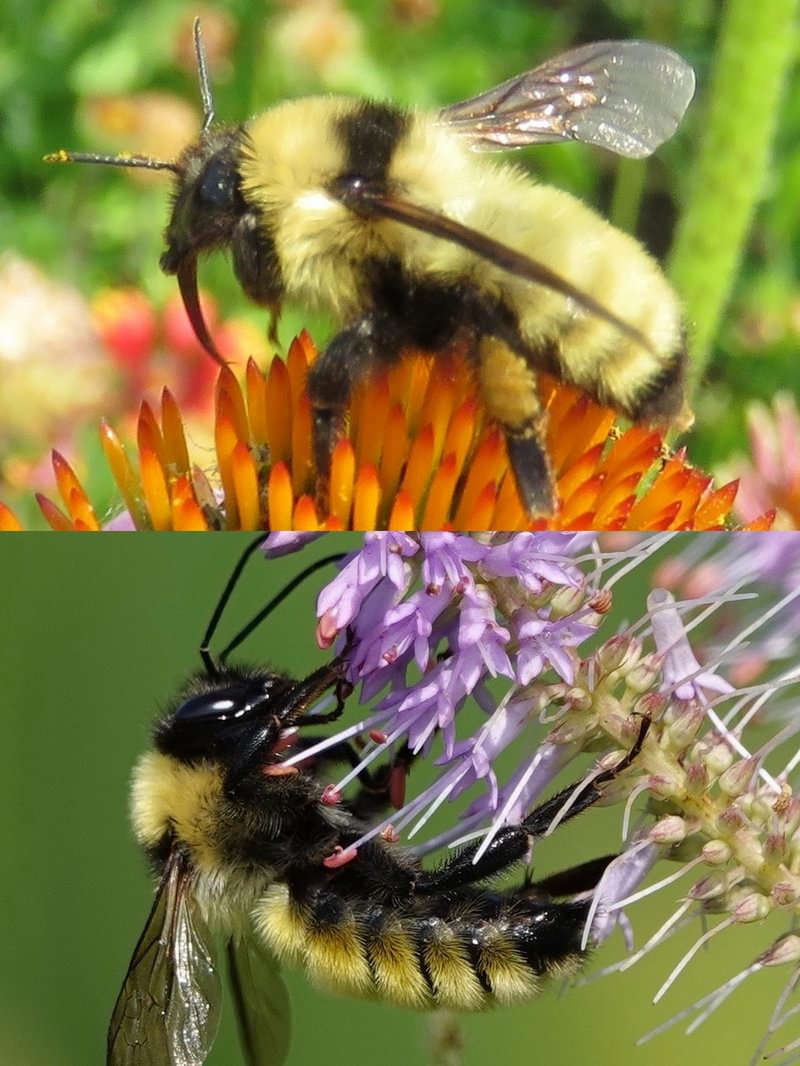


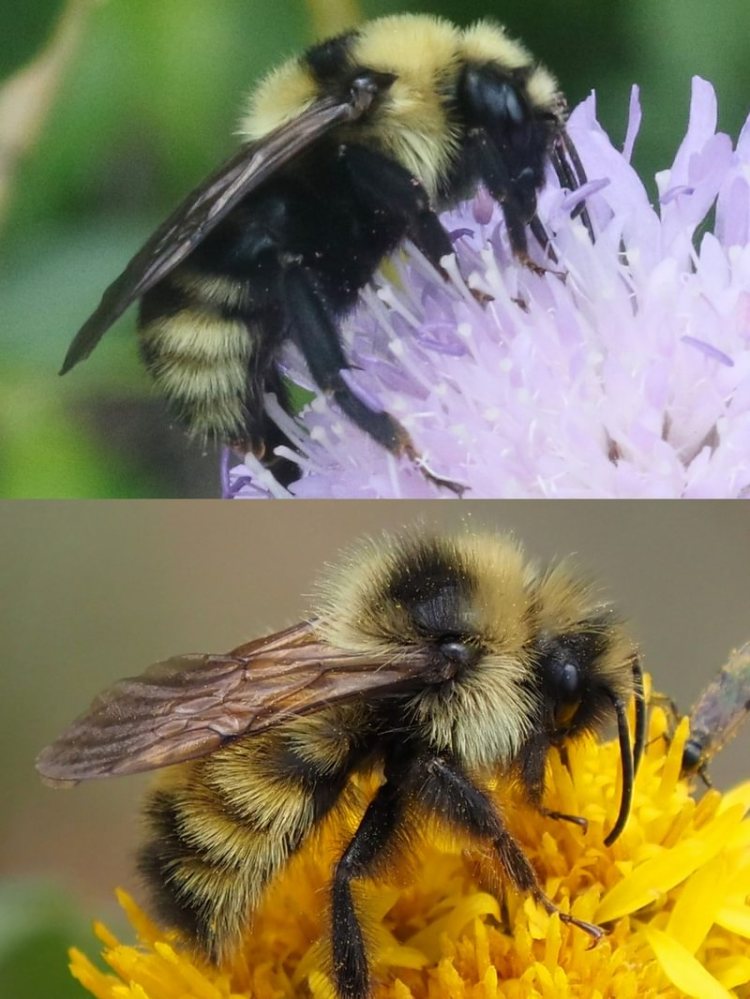




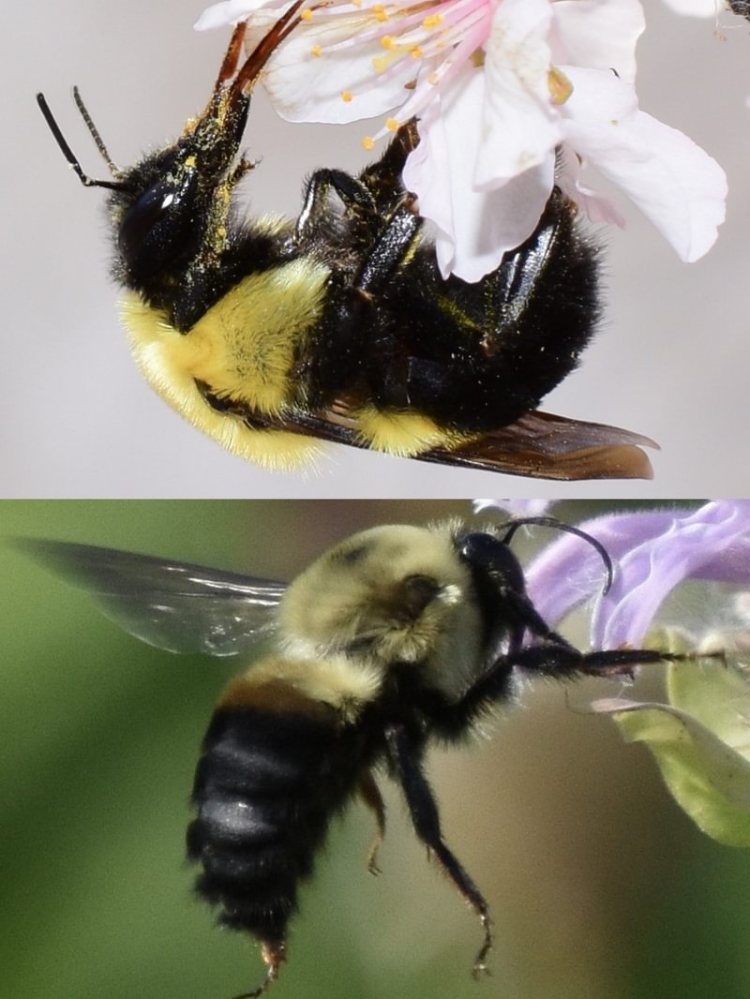








Digger Bees (tribe Aeshnidae)
Large, hairy, solitary bees that make their nests in the soil. They have a protruding plate on the front of their face called a clypeus that distinguishes them from Bumble Bees.



Long-horned Bees ( tribe Eucerini)
These bees are known for their long antennae. The Melissodes genus is striped, while the Eucera genus is dark and robust. The males in particular are extremely fast fliers and spend very little time stopped at any one flower.






Cuckoo Bees (tribe Nomadinae)
“Cuckoo” Bees get their name because they lay their eggs in another bee’s hive, to be raised by them. While the Nomadinae tribe is made entirely of Cuckoo species, there are bees with cuckoo behavior in other bee families as well.




Mourning Bees ( genus Melecta)
This genus is another group of cuckoo bees. They specifically target the nests of Digger Bees.


Honey Bees (genus Apis)
The classic honey making bee of beekeepers’ hives, they are an introduced species from Europe. No honeybees were native to the Americas until the 16th century, with plants instead being pollinated by other bee species and insects. “Colony Collapse Disorder” has led to a shortage of honey bees in both North America and Europe, but the cause (potentially pesticides, disease, or habitat loss) has not been determined.

Carpenter Bees ( Subfamily Xylocopinae)
Carpenter bees get their name from how they burrow into dead wood, sometimes even into homes. Large Carpenter Bees can be as much as 3/4″ long, while the distantly related Little Carpenter Bees are only around 1/4″ long.
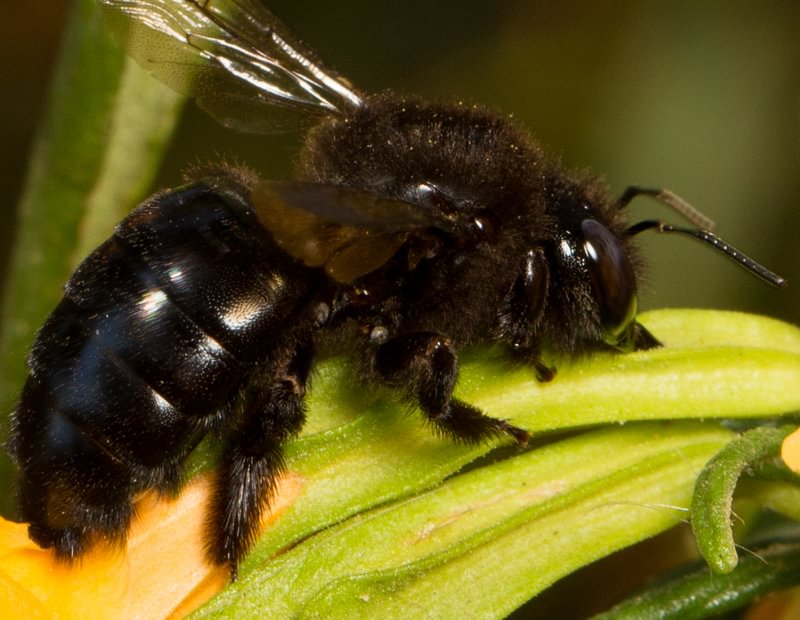



Mason and Leafcutter Bees (family Megachilidae)
Mason Bees (tribe Osmiini)
Mason bees are solitary bees that use mud to construct nests in cracks, hollow twigs, and the holes of other insects. They are efficient pollinators and often used commercially. Their sting is rarely used and not painful.










Leafcutter Bees (tribe Megachilini)
Leafcutter bees are solitary bees that nest in hollow twigs and cracks. They neatly cut leaves to line their nests. One species, the Alfalfa Leafcutter, is used in commercial pollination.
















Resin and Pebble Bees (tribe Anthidiini)
Resin and Pebble Bees are solitary bees that use resin to glue their nests together. Pebble bees connect pebbles with resin to build their nest.





Sweat Bees (family Halictidae)
Striped Sweat Bees (genus Agapostemon)
The name “sweat bee” comes from the propensity to fly around people’s faces, trying to get salt/moisture from the sweat. Striped Sweat Bees can be solitary or communal, with numerous females sharing the same massive underground nest. In some Columbia County fields the Bicolored Sweat Bee is found in massive aggregations.


Furrow Bees (genus Halictus)
Furrow Bees live solitary or in small groups, digging burrows into dirt slopes or rotten wood. They can be distinguished from the sweat bees of genus Lasioglossum because their hair rows emanate from the outer part of each segment.

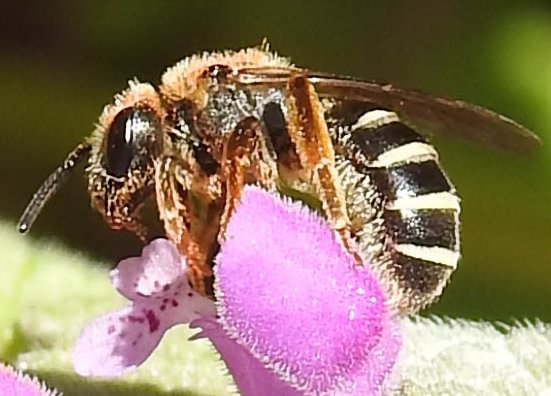




Sweat Bees (genus Lasioglossum)
Much like Furrow Bees, Sweat Bees of the genus Lasioglossum build tunnels in soil and rotten wood. They can be solitary, eusocial in small groups or large, or “cuckoos” that lay their eggs in other bees’ nests. They differ from Halictus because the hairs come from the inner portion of each segment














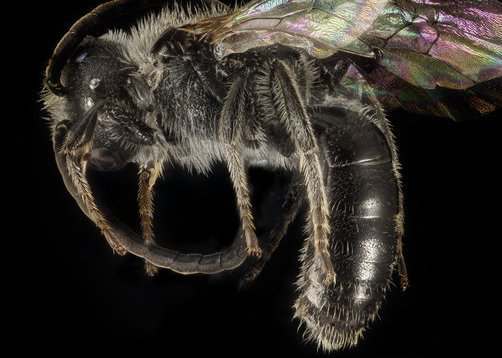

Blood Bees (Tribe Sphecodini)
Blood bees get their name from their black and red coloration. They are one of many groups of “cuckoo bees” which lay their eggs in other bees’ nests, to be raised by them. This means they do not need to collect pollen like other bees, which primarily use it as a protein source to feed their offspring.

Shortface Bees (Subfamily Rophitinae)
These sweat bees are often hairy and have long antennae in a lower position. Only two submarginal wings cells. Many species have very specialized plant associations.

Mining Bees (family Andrenidae)
Mining or “Miner” bees are solitary bees that dig complex tunnels in the ground to raise their young.
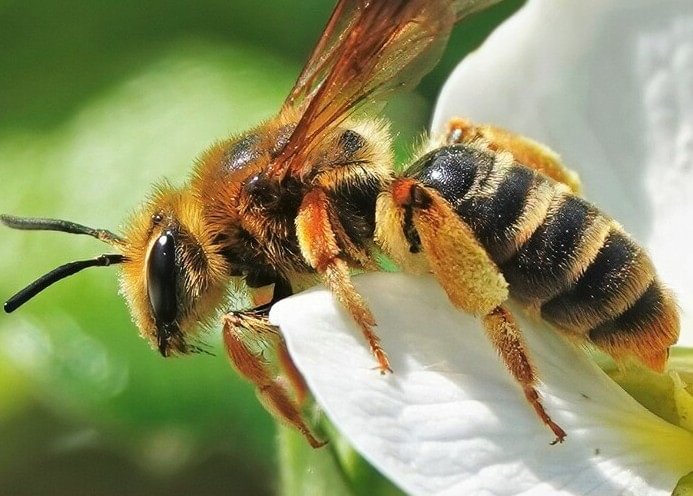


(photo © Brad Walker)


Masked Bees (family Colletidae)
Also known as “Plasterer Bees”, these solitary bees apply secretions to the wall of their nest with their mouth, which dry into a cellophane-like lining. They are thought to be the most primitive bee family.



Return to Insects guide

Not sure if I’m blind for not noticing this section until the other day, but I’m so glad you added bees! I’ve been seeing a few Osmia cornifrons around (I think) and have been unsuccessfully searching for them until now. Thank you!
LikeLike
You’re not blind, I just added bees a couple weeks ago. Even rushed and published it half-finished because I know a lot of people are seeing the bees out right now.
LikeLike